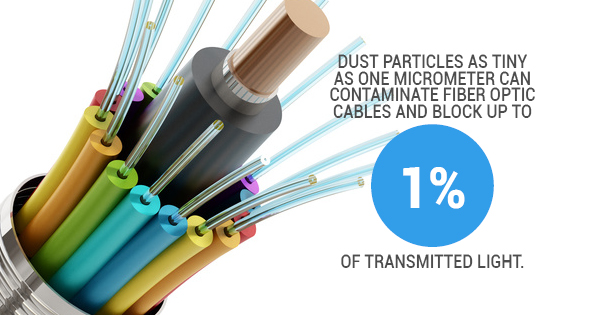
In the digital age, having a reliable internet connection is crucial. While homes and businesses used to rely on network Ethernet cables to connect, many have now switched to fiber optic cables. Since the very first fiber optic cable was used in 1988 to connect the U.S. to Great Britain and France, these installations have become incredibly popular all around the world for their higher capacity, ability to support long-distance connections, and interference blocking abilities.
While bulk fiber optic cables are quite reliable in terms of their performance, you still need to take care that this technology is maintained properly. Having a clean connection is absolutely essential for preventing network failures. If you are in charge of installing and/or maintaining your fiber optic network, you’ll want to keep the following tips in mind.
Know the Right Way to Clean
There’s a very specific cleaning process to follow here, as contamination and improper cleaning procedures can lead to significant problems in your network’s performance. Follow every step carefully to ensure you’re able to eliminate dust/contaminants and leave behind a clean environment. First, inspect the fiber cable connector, component, or bulkhead using a fiberscope. Use a dry cleaning technique (like a dry cleaning tape stick or swab) and inspect again. If it’s still dirty, repeat this step. After this has been completed a second time and if the connector is still dirty, you can use a wet cleaning technique (such as a non-volatile optical cleaning fluid) followed by a dry cleaning method to ensure no residue is left behind. Remember that wet cleaning methods are not to be used for receptacles and bulkheads, as this can cause damage. If the contaminant still remains, repeat the recommended cleaning procedures until it is successfully removed. Always wear regulated safety glasses when performing these steps, disconnect cables at both ends prior to cleaning, and to follow all instructions.
Don’t Rely on Eyesight Alone
There’s a very good reason that fiberscope inspections are required for proper cleaning: we simply cannot see most contaminations with the naked eye. Dust particles as tiny as one micrometer can contaminate fiber optic cables and block up to 1% of transmitted light. A speck that’s only nine micrometers in size is way too small for humans to see without the use of a device, but it can block the cable’s core entirely. You’ll need to rely on a fiberscope (or fiber optic microscope) capable of at least 200X to 400X magnification. You can even digitally record the images you capture to examine later on.
Understand Contamination is Inevitable
One point about using fiber optic cable networks is that — even if you use dust caps and install the cables directly out of the bag — you’re going to deal with dust contamination at some point. Oil, dust, debris, and even packaging remnants can easily find their way into connectors and other components. That’s why regular inspection and maintenance is key. Before you ever plug in your cables and to ensure your connections remain clear, you’ll need to make frequent cleaning a priority.
The good news is that, assuming your fiber optics are free of debris, these cables provide a high-quality connection on which you can rely. To find out more about purchasing these cables in bulk or to explore your other cabling options, get in touch with us today.



